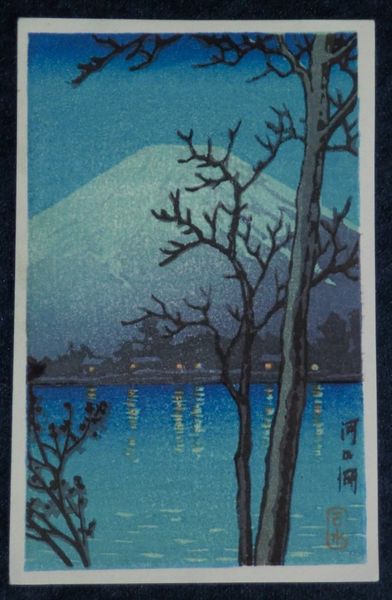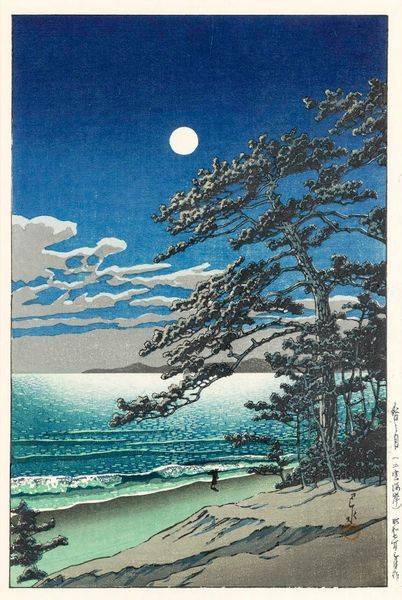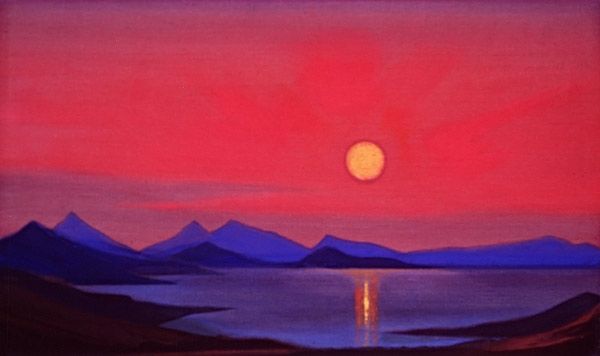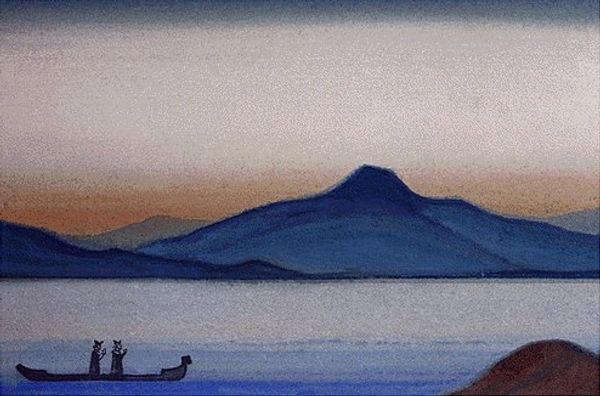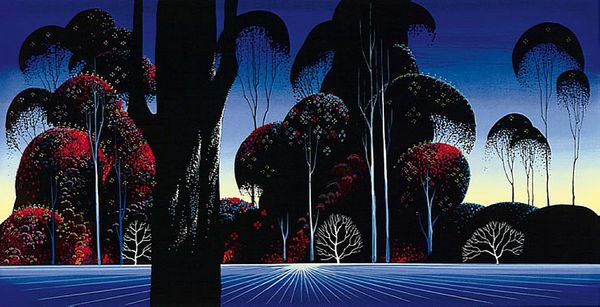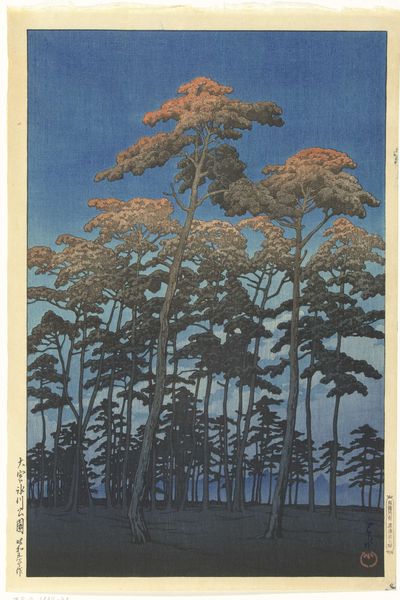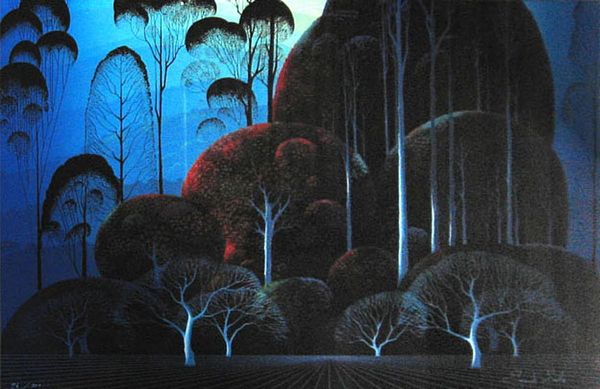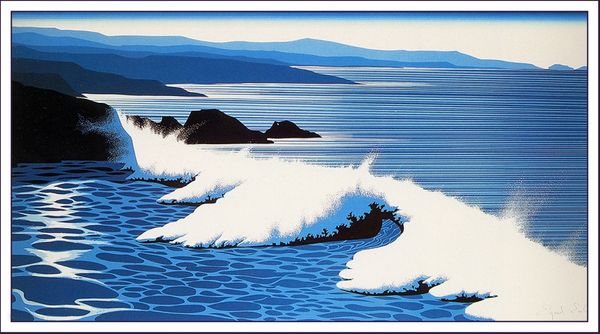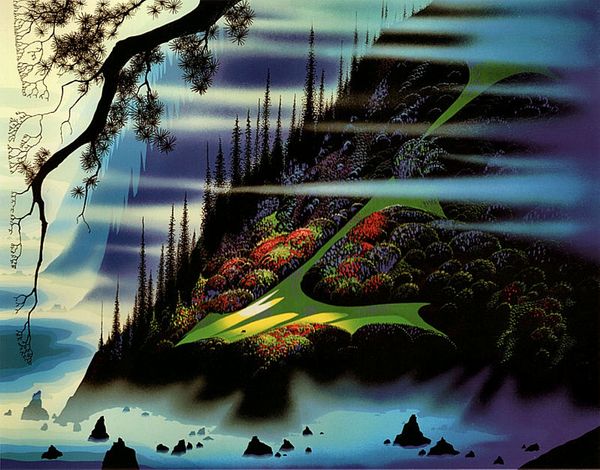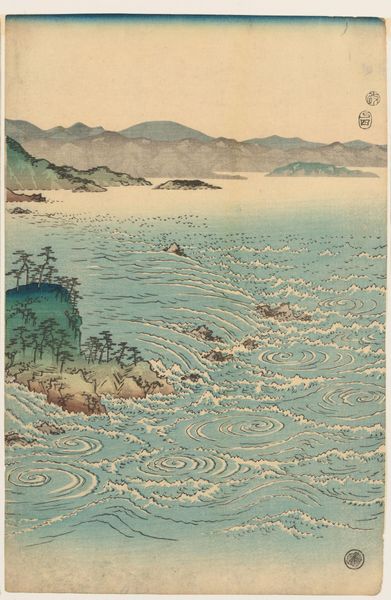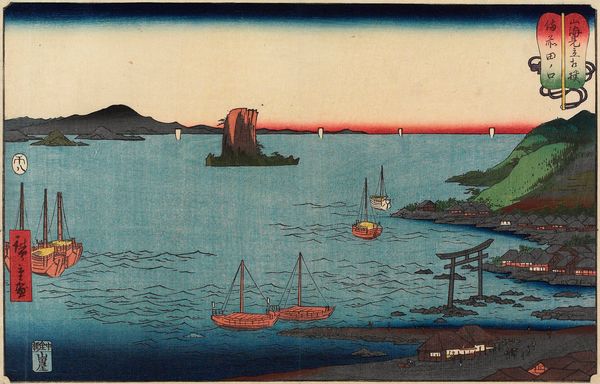
Copyright: Public domain Japan
Editor: This is "Full Moon at Fugato Island" created in 1933 by Hasui Kawase. It's a beautiful, tranquil landscape crafted as a woodcut print. The blues are just stunning and immediately make me feel at peace. How do you see it? Curator: Focusing on its formal elements, the masterful use of color gradation immediately strikes the eye. Observe how Kawase employs varying shades of blue to establish depth and evoke the nocturnal ambiance. The composition, dividing the scene horizontally, allows for a structured visual experience. The moon, positioned centrally, becomes a focal point, yet its effect relies entirely on the surrounding cloud formations and their textural contrast. What purpose do you think the linear qualities and silhouettes serve within this overall composition? Editor: I suppose the lines of the trees and the boat add to that feeling of serenity; they're like accents that quietly guide your eye. What makes it different from a photograph of the same subject? Curator: Precisely! This piece operates within the aesthetic conventions of Ukiyo-e. Note how Kawase strategically uses negative space, something photography doesn't traditionally consider in the same way. It enhances the ethereal mood and allows the forms to breathe, to exist not merely as representations, but as distilled, potent elements. Consider the strategic flattening of space and selective cropping; do you notice the ways in which these choices amplify certain emotive elements? Editor: I do see that now, thanks. I see the way the shapes and composition create feeling. I have a whole new appreciation for it! Curator: Indeed. Focusing on such aesthetic decisions shows how an image's elements combine to conjure mood, which has taught us to see differently.
Comments
No comments
Be the first to comment and join the conversation on the ultimate creative platform.
